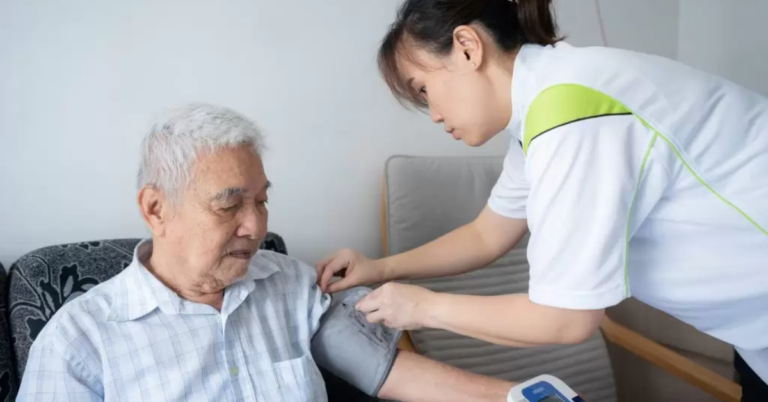The Impact of Technology on Patient Engagement
betbhai247, playexch live, gold365:Technology has revolutionized the healthcare industry in recent years, impacting patient engagement in significant ways. From telemedicine to wearable devices, technology has changed the way patients interact with their healthcare providers. In this article, we will explore the various ways in which technology has influenced patient engagement and the benefits it brings to both patients and healthcare professionals.
Telehealth and Telemedicine
Telehealth and telemedicine have become increasingly popular in recent years, especially with the COVID-19 pandemic driving the need for remote healthcare services. These technologies allow patients to consult with their healthcare providers from the comfort of their homes, making it more convenient and accessible for them to seek medical advice and treatment. Telehealth also enables healthcare professionals to monitor patients’ conditions remotely, ensuring continuity of care even when patients are not physically present in the clinic.
Wearable Devices and Health Apps
Wearable devices such as smartwatches and fitness trackers have empowered patients to take a more active role in managing their health. These devices can track various health metrics, such as heart rate, blood pressure, and activity levels, providing patients with real-time feedback on their health status. Health apps, on the other hand, allow patients to monitor their medication schedules, track symptoms, and communicate with healthcare providers easily. By using wearable devices and health apps, patients can stay connected to their healthcare providers and take control of their health outcomes.
Electronic Health Records (EHRs)
Electronic health records (EHRs) have streamlined the process of storing and accessing patients’ medical information. EHRs allow healthcare providers to access patient records securely, enabling them to make informed decisions about patient care quickly. Patients also benefit from EHRs as they can access their medical records online, track their health history, and communicate with their healthcare providers more effectively. EHRs improve coordination of care among healthcare professionals, leading to better outcomes for patients.
Patient Portals
Patient portals are secure online websites that allow patients to access their health information, communicate with healthcare providers, and schedule appointments conveniently. Patient portals enhance patient engagement by providing patients with easy access to their medical records, test results, and treatment plans. Patients can also request prescription refills, pay bills, and receive reminders for follow-up appointments through patient portals. By using patient portals, patients can actively participate in their healthcare journey and stay informed about their treatment progress.
Remote Monitoring
Remote monitoring technologies enable healthcare providers to track patients’ health status outside of clinical settings. For patients with chronic conditions or those recovering from surgery, remote monitoring can offer continuous care and support. Remote monitoring devices can collect data on patients’ vital signs, symptoms, and medication adherence, allowing healthcare providers to intervene proactively if any issues arise. By leveraging remote monitoring technologies, healthcare professionals can monitor patients’ progress remotely and provide timely interventions when necessary.
Interactive Patient Education Tools
Interactive patient education tools help patients understand their medical conditions, treatment options, and care plans better. These tools can include videos, animations, and interactive modules that explain complex medical concepts in a user-friendly manner. By using interactive patient education tools, patients can become more informed about their health and make informed decisions about their care. Healthcare providers can also use these tools to engage patients in their treatment plans and encourage them to take an active role in managing their health.
In conclusion, technology has had a profound impact on patient engagement in healthcare. From telehealth and wearable devices to electronic health records and patient portals, technology has transformed the way patients interact with their healthcare providers. By leveraging technology, healthcare professionals can empower patients to take control of their health and improve outcomes. Patient engagement is crucial for delivering quality care, and technology plays a vital role in facilitating communication, coordination, and collaboration between patients and healthcare providers.
FAQs
1. How does telehealth benefit patients?
Telehealth enables patients to consult with their healthcare providers remotely, saving time and reducing the need for in-person visits. Patients can access healthcare services from anywhere, making it more convenient for them to seek medical advice and treatment.
2. What are some examples of wearable devices in healthcare?
Wearable devices such as smartwatches, fitness trackers, and blood glucose monitors are commonly used in healthcare to track various health metrics. These devices provide patients with real-time feedback on their health status and help them monitor their health more effectively.
3. How can patients benefit from using patient portals?
Patient portals allow patients to access their medical records, communicate with healthcare providers, schedule appointments, and request prescription refills online. Patients can stay informed about their treatment plans and track their health progress using patient portals.
4. How do interactive patient education tools help patients?
Interactive patient education tools help patients understand their medical conditions, treatment options, and care plans better. These tools use videos, animations, and interactive modules to explain complex medical concepts in a user-friendly manner, empowering patients to make informed decisions about their health.







